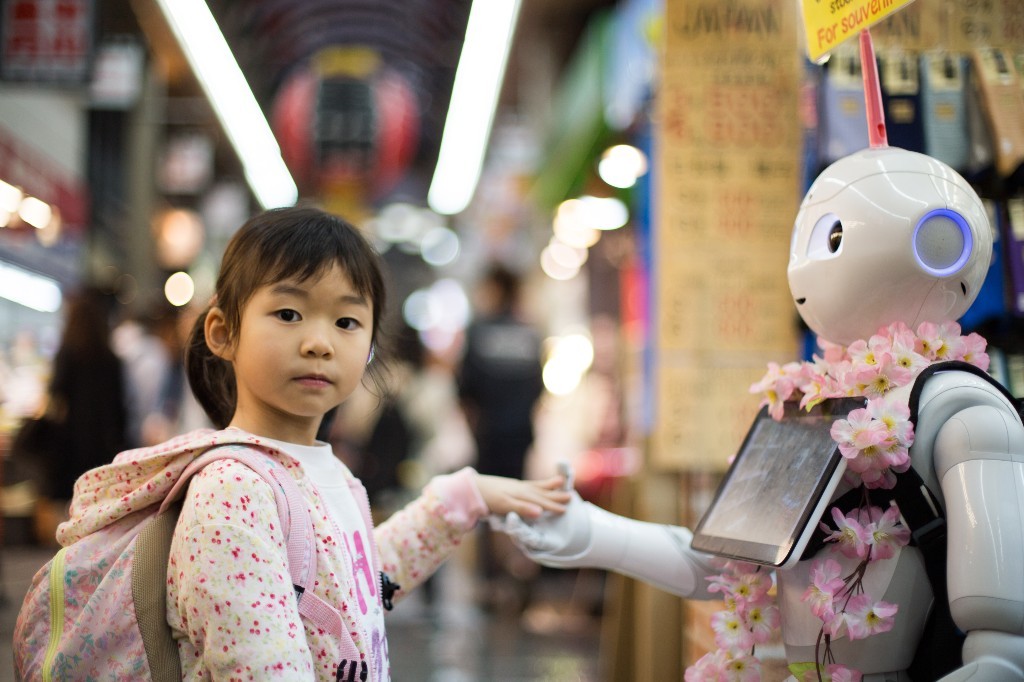In recent years, there has been a significant advancement in the field of Artificial Intelligence (AI) and Augmented Reality (AR). These technologies have become increasingly popular and have the potential to enhance virtual experiences in various fields such as gaming, education, healthcare, and...
Advancing Mobility, Dexterity, and Interactivity: Humanoid Robots

Humanoid robots have emerged as a significant technological advancement in recent years, revolutionizing the way we interact with machines. These robots are designed to resemble humans in their appearance and behavior, allowing for more natural and intuitive communication between humans and robots.
One of the most remarkable features of humanoid robots is their mobility. With advanced sensors and sophisticated algorithms, these robots are capable of navigating complex environments, such as climbing stairs, walking on uneven terrain, and even running. This mobility opens up a wide range of possibilities for applications in various fields, from search and rescue missions to household chores.
In addition to their mobility, humanoid robots also possess impressive dexterity. With precise motor control and delicate touch sensors, these robots are able to manipulate objects with a level of skill and precision that was once thought to be exclusive to humans. This dexterity enables them to perform tasks such as cooking, cleaning, and even performing delicate surgeries.
Furthermore, humanoid robots are designed to interact with humans in a more natural and intuitive way. They are equipped with facial recognition systems, speech recognition software, and natural language processing capabilities, allowing them to understand and respond to human gestures, expressions, and verbal commands. This level of interactivity makes them ideal companions, assistants, and even caregivers for humans, particularly in situations where human interaction is limited or restricted.
In conclusion, humanoid robots have the potential to revolutionize the way we live and work. With their mobility, dexterity, and interactivity, these robots can assist us in various tasks, enhance our productivity, and improve our overall quality of life. As technology continues to advance, the possibilities for humanoid robots are limitless, and we can expect to see even more incredible advancements in the future.
Humanoid Robots: Enhancing Mobility
Humanoid robots are revolutionizing the way we move and interact with the world. With their advanced capabilities, these robots are designed to mimic human movement and navigate various environments with ease.
One of the key features of humanoid robots is their enhanced mobility. These robots are equipped with advanced sensors and algorithms that allow them to move in a human-like manner. They can walk, run, climb stairs, and even perform complex tasks requiring dexterity.
By enhancing mobility, humanoid robots are opening up a wide range of possibilities. They can be used in industries such as healthcare, manufacturing, and logistics to perform tasks that are too dangerous or tedious for humans. For example, humanoid robots can assist in surgeries, assemble products in factories, and deliver goods in warehouses.
In addition to their physical mobility, humanoid robots are also capable of enhancing social interaction. With their human-like appearance and ability to understand and respond to human gestures and speech, these robots can engage in meaningful conversations and provide companionship to people in need.
Furthermore, humanoid robots are not limited to a specific environment. They can adapt to different terrains and navigate through crowded spaces. This flexibility makes them ideal for applications such as search and rescue missions, where they can assist in locating and rescuing people in emergency situations.
In conclusion, humanoid robots are revolutionizing mobility by enhancing our ability to move and interact with the world. With their advanced capabilities, these robots are pushing the boundaries of what is possible and opening up a world of new opportunities in various industries.

Innovative Technology
Humanoid robots are at the forefront of innovative technology, pushing the boundaries of what is possible in terms of mobility, dexterity, and interactivity. These robots are designed to mimic human movements and behaviors, making them incredibly versatile in a wide range of applications.
One of the key innovations in humanoid robot technology is the development of advanced sensors and actuators. These sensors allow the robots to perceive their environment and react accordingly, while the actuators enable them to move and interact with objects and people. This combination of sensing and actuation capabilities is what gives humanoid robots their remarkable dexterity and mobility.
Another innovative feature of humanoid robots is their ability to learn and adapt. Through machine learning algorithms and artificial intelligence, these robots can acquire new skills and improve their performance over time. This makes them ideal for tasks that require a high degree of flexibility and adaptability.
Furthermore, humanoid robots are equipped with sophisticated communication systems, enabling them to interact with humans in a natural and intuitive way. They can understand voice commands, recognize facial expressions, and respond to gestures, making them highly interactive and user-friendly.
In summary, the innovative technology behind humanoid robots is revolutionizing the way we think about mobility, dexterity, and interactivity. With their advanced sensors and actuators, learning capabilities, and natural communication systems, these robots are pushing the boundaries of what is possible in robotics and opening up new possibilities for human-robot collaboration in various industries.



